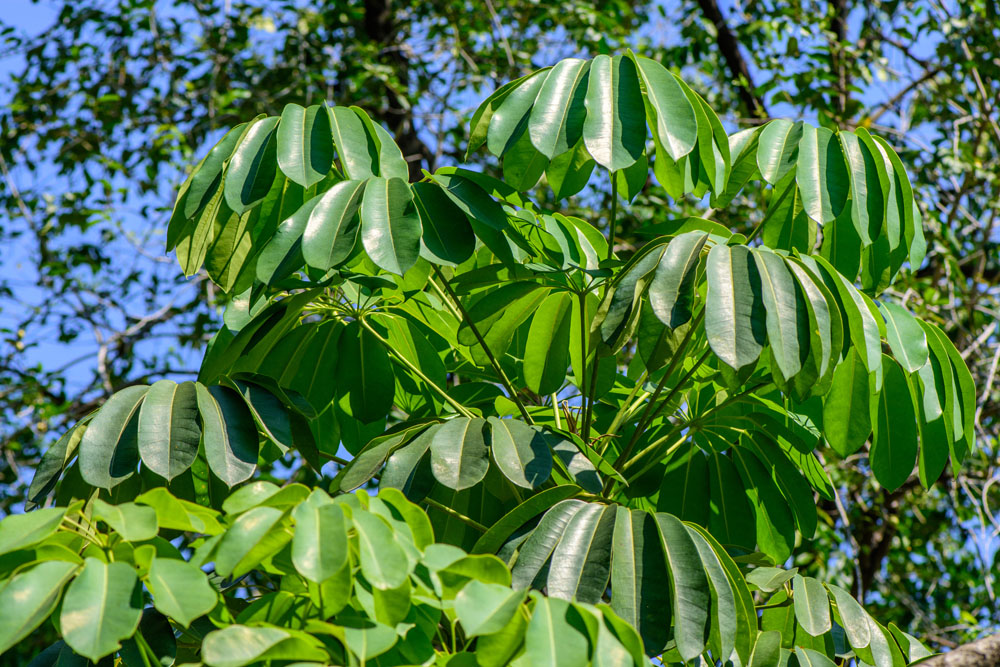Description
Schefflera – Brassaia – Dizygotheca – Heptapeurum –
There are 700-900 mostly evergreen shrubs, trees, climbers (some epiphytic when juvenile), in the Araliaceae family, in this genus. They are found naturally occurring in warm temperate and tropical areas of Southeastern Asia to the Pacific Islands, and Central and South America. They are grown mainly for their spiraled, long stalked, usually rounded, fully divided leaves, each with 3-30 stalked leaflets. Juvenile leaves are sometimes different to than the mature leaves. In summer, autumn, winter, mature trees bear compound umbels, panicles, racemes, or spikes of usually tiny flowers with 4 or 5 yellow green to greenish red petals. The flowers are followed by mostly spherical or egg shaped, black or purple fruits. Grow as a house plant.
Indoors, grow in soil based potting mix in bright filtered or indirect light. During the growing season, water moderately and apply a balanced liquid fertilizer monthly, keep just moist in winter.
Prone to scale insects, thrips, mealybugs, and the larvae of some Lepidopteran species including Batrachedra arenosella.
S. actinophylla – Brassaia actinophylla – Australian Ivy Palm – Octopus Tree – Queensland Umbrella Tree – This multi-stemmed erect, large shrub or small tree from the rainforest of Australia, and South and Southeast New Guinea grows 30-50′ feet tall and 20′ feet wide. From stiff, thick, sparsely branched stems, it carries large leaves, up to 15″ long, divide into 7-16 ovate-oblong, leathery, glossy, light to mid green leaflets, to 15″ long, are borne in terminal rosettes on branches. Leaves of juvenile plants have fewer, smaller leaflets than those of adult plants. In summer, upright terminal, compound panicles, of up to 1,000, to 32″ long, are made up of tiny, red flowers with contrasting cream stamens. Flowers are followed by spherical black fruit. Often grown as juvenile plants.
Zones 14-15





